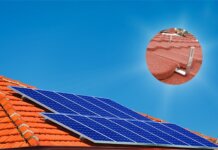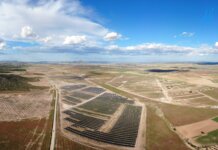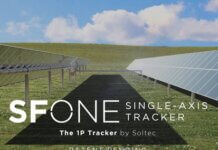According to Wood Mackenzie’s recent U.S. PV market study, more than 6 GW of photovoltaic projects will be installed throughout 2020. Soltec, a global manufacturer and supplier of solar tracker equipment, is aiming to be involved with nearly 600 MW of that total.
Colin Caufield, Soltec’s vice president of sales for the U.S., recently talked to Solar Industry about the company’s next movements within the North American market.
Q: What are the latest developments with Soltec in the U.S.?
Caufield: We’ve brought on four new customers over the past two fiscal quarters, and we expect to see that trend continuing throughout 2020. Our new customers are EPC contractors in some cases, and in others, we’ve contracted directly with IPPs that will own and operate their power-generating assets.
We’ll supply over 500 MW in the U.S. in the first half of 2020, and this volume is split almost evenly between projects using bifacial crystalline products and First Solar’s Series 6 panels. Our projects are situated across the country, with significant volumes in the Mid-Atlantic, the Midwest and in the Hawaiian Islands. This gives us a great variety of site conditions, from high winds to significant snow loads and soft soils to grounds covered by volcanic rock. These are exciting times!
Q: What are the forecasts for the PV market for the coming years in the U.S., and what role will Soltec play in it?
Caufield: Despite year-over-year stepdowns in the investment tax credit, all forecasts are showing that the U.S. market will be the standout leader for utility-scale PV in the near future. Demand for new energy sources, combined with a downward trend in PV equipment, execution and plant operating expenses, will continue to foster new solar developments well into the 2020s.
As an equipment supplier with over 15 years of experience and over 9 GW of installations worldwide, Soltec intends to be a primary player in the single-axis tracker industry. Our R&D, combined with our best-in-class equipment and breadth of ancillary services, will make Soltec a strategic partner for many throughout the decade.
Q: What plants has Soltec supplied in the U.S. in the last year? How many of them have been bifacial?
Caufield: We have 11 projects currently under supply contracts, and 10 of those projects are using bifacial equipment.
Q: How important will bifacial technology be for upcoming projects in the U.S. market?
Caufield: Incredibly. We’re already seeing most crystalline projects trend in that direction. It’s of little surprise when you consider that the premium for procuring and installing bifacial equipment is relatively low, while the yield boost is consistently greater than 7%, even at sites with less-than-favorable conditions.
It is key, however, that attention be paid not only to the use of certain bifacial panels, but also to the tracker choice and overall plant design. These are major factors in how much extra yield one can expect to see when compared to a monofacial plant in the same environment.
With the research that Soltec has been performing at our BiTEC facility in Livermore, Calif., we’ve identified the ways that tracker design, algorithms and overall plant design can be optimized to see bifacial gains as high as 15.7% (yearly average under high albedo conditions). We encourage industry partners to get in touch with us to learn how to maximize the potential of their power plants.
Q: What implementations or developments is Soltec carrying out to adapt to the U.S. market?
Caufield: A big key to our success will be expanding our team in order to give personalized service to an increasing customer base. As I mentioned earlier, we intend to work with developers and IPPs in early development stages of projects to optimize the yield potential of their plants. The results will make their proposals far more competitive, and we’re committed to special attention to detail provided by our project engineering team.
A similar focus will be placed on our project management and construction success teams to ensure execution is as smooth as it can possibly be. After-sales services is another area of focus that we’ve worked to expand and improve. Our SolMate platform has a state-of-the-art interface and commitment to speedy customer service to ensure minimal downtime and rapid diagnosis of operational issues.
Q: What benefit does the Soltec solar tracker have compared to others in the market?
Caufield: A lot of the benefits that IPPs and developers are seeing are tied to our equipment for bifacial plants and extra yield boost. We intend to have IE studies performed that will allow customers to see these benefits during project finance stages. This is expected to fuel the industry even more, but I’d be remiss not to mention that EPC contractors working with our equipment have been noticing installation efficiencies that are exceeding their expectations, too.
It was long assumed that two-portrait trackers are more expensive to install, but recent project execution has been debunking that theory, and doing so unequivocally. This not only allows them to save margin during execution, but also enables them to confidently bid more aggressively on future projects. The results are increasingly lower LCOE.
We’re immensely excited to have hit the ground running in 2020. The decade’s beginnings are auspicious indeed! Thanks for your time today.




